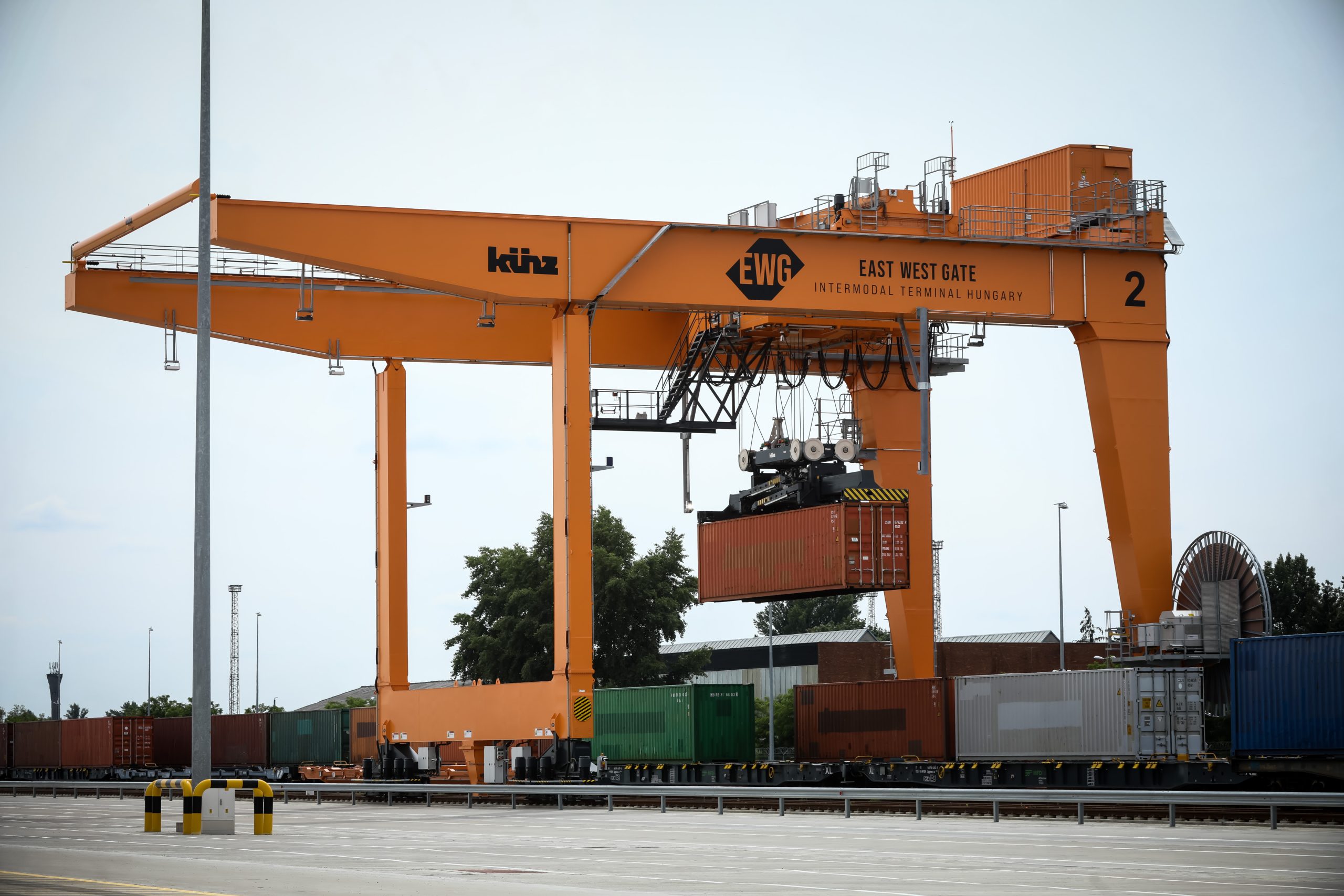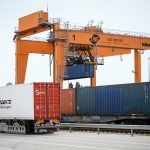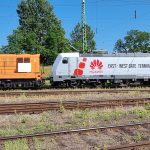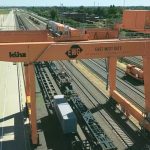
5G technology in a rail freight terminal brings outstanding value for transport, operations and connections and builds safer and more efficient smart rail facilities. This is the case – and a milestone for Hungary – of the East-West Gate rail terminal in Fényeslitke, Hungary, an essential facility and a gate for freight traffic between Europe and Asia. At the terminal, Huawei and its partners deployed the digital technology contributing to country’s 5G development strategy which also determines the wide application of this solution in Hungary’s rail freight sector.
By Pamela Luica
The trade between Europe and Asia has been taken over by maritime transport but now it is time to shift towards railways, the single transport mode with low emission which can capture massive freight volumes answering mobility demands even in the face of a crisis. According to the Review of Maritime Transport 2022 of United Nations Conference on Trade and Development (UNCTAD), in 2021, 40% of total containerised trade was on the main East-West routes, between Asia, Europe and the United States and the trade on Asia – Europe route increased by 10%. In 2021 and 2022 the pandemic critically challenged maritime transport, causing massive disruption in logistics supply and the war in Ukraine had further impacted the international transport. In all this chaos – with heavily congested ports and airports, railways managed to ensure international freight movement and determined the industry to turn to its services. This contributed to the awareness of the importance of the railway and terminals both from an economic point of view, as well as its minimal impact on the environment, and companies and industries turned their attention to this mode of transport. These reasons determined the increase of rail transport by more than 30% reaching 1.5 million TEU, according to the report of UNCTAD and more rail services have started being provided.
Rail transport and logistics create an ecosystem that can work flexibly, efficiently and quickly with new technologies having the essential role of providing services, capabilities and capacities for the benefit of customers and operators. Practically, the definition of this ecosystem is given by smart technologies, 5G technology unlocking the economy through its capability of high performance and efficiency connecting the industries.
The added value
The rail freight terminal in Fényeslitke, Hungary, developed by East-West Intermodal Logistics, is situated in the immediate vicinity of the Hungarian – Ukrainian border, where the European gauge meets the wide gauge railway and ensures the continuity of freight volumes movement between Europe and Asia. The terminal serves as the east-west gateway on the New Silk Road.
Work on the EUR 96.8 million project started at the beginning of 2021 on an 85-hectare area which provides 10 km of tracks (five 1,520-mm tracks and five European gauge tracks) and a 15,000-square-metre warehouse. The terminal is equipped with three separate 850-metre crane tracks that serve 740 m-long trains at the same time. The cranes have a load capacity of 45 Mt.
The East-West Gate (EWG) terminal has one 41-metre wide and two 28-metre-wide cranes on rails, as well as a free ranging 20-metre-high crane. The terminal can handle up to 1.2 million TEUs per year – one of the largest intermodal terminals in Europe – and it is suitable for loading trucks and conventional road semi-trailers onto rail. The terminal has been inaugurated in October 2022, making Europe’s first terminal equipped with 5G MPN network for internal communications and the operation of technological devices. It is also the first terminal in the world where the fully automated overhead cranes of the terminal, which will be able to carry out fine movements too, to be remotely controlled by means of the 5G, which highlights the benefits of this technology in logistics.
Instead of drivers operating the cranes from a cabin, the cranes are equipped with 20 high-resolution cameras whose images are fed to remote operators. The cranes are also fitted with advanced sensors and artificial intelligence (AI) algorithms, allowing them to operate with a high degree of accuracy and speed. Large bandwidths are required to upload the images from the cranes and view them in real time, and low latency is needed to accurately control the cranes improving the efficiency of container loading and unloading and the work environment of crane operators. The remote controlling of these cranes significantly reduces the need for workers on the ground as containers are transferred which also boosts the safety at the terminal.
Huawei has delivered customised high data security private 5G network enabling wireless real-time remote control on the entire container terminal area, significantly increasing the efficiency and changing the working conditions.
Due to the deployed 5G technology on the cranes – remotely operated through transmitted HD images, the terminal’s operation efficiency increased by 20% from 23–25 TEU/h to 32–35 TEU/h. As cameras have been flexibly deployed to identify and track containers in real time, this reduces the accidents and improves identification accuracy thus determining fewer tallying faults.
Digital twins offer a way to fundamentally improve logistics efficiency. In the past, wired sensors could not be flexibly deployed, while traditional wireless sensors could not support highly-reliability and low-latency data synchronisation.
The 5G technology also provides energy conservation due to the deployment of 100 solar 5G sensors, which allows data to be reported to the terminal’s railway operating system in real time, effectively reducing EWG’s OPEX by up to 40%. The terminal is working based on green resources and technologies which also allows operation of electric terminal tractors and e-cars in the terminal area, and thanks to the deployment of 100 green sites, the zero-carbon-emission terminal is in line with European climate and transport strategies contributing to the development of a sustainable environment.
Work environment
5G technology is also an enabler for improved working conditions and provides jobs to attract young workers. It facilitates remote and fine operations of automatic cranes, so operators can work in a more comfortable environment. This has reduced operation risks and the labour costs of this traditionally labour-intensive industry. The project has created about 100 new jobs that require digital skills, and an additional 500 workers are expected to be indirectly employed by the terminal by the end of this year. The digital operations eliminate operation restrictions, thereby providing new employment opportunities, empowering women to better access this sector.
Share on:








